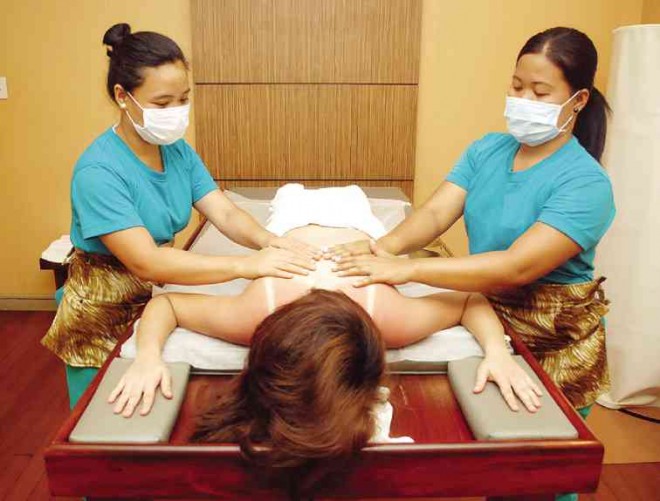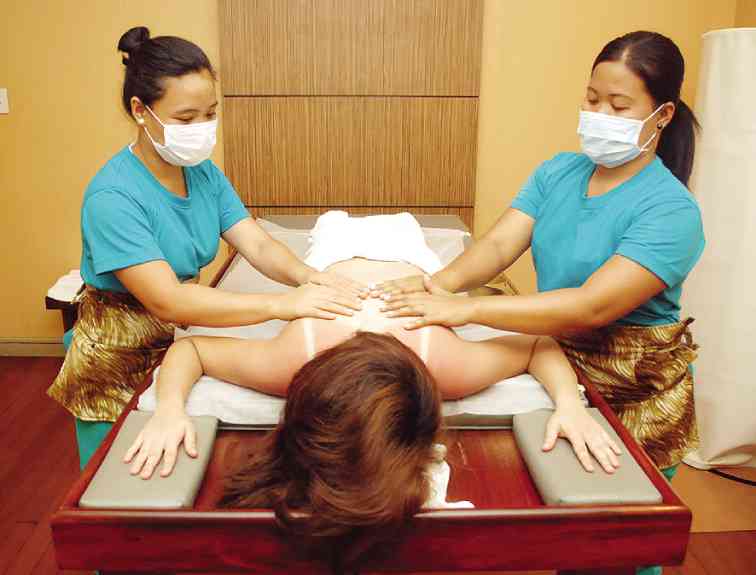
It’s not all mumbo-jumbo. Ayurveda, one of the oldest systems of medicine in the world, is currently under the scrutiny of the Western scientific community. So far, the results are encouraging.
Patrick Eyquem, the Frenchman from Bordeaux, France, who runs Arogya Ayurvedic Center in Makati City, was seated across a table neatly stacked with papers and books. With restrained excitement, he talked about how modern science is little by little proving this ancient Indian medicinal system correct.
Many who seek long-term solutions to their ailments, including a good number from the local medical community, now frequent the center, located in a nondescript part of town (8398 Mayapis St., San Antonio Village, Makati City). Their health conditions vary, from diabetes to hypertension and high cholesterol, from anxiety to insomnia and depression.
The results come slow, after six, 10 or even more sessions, but these patients always come back. Turns out there is a good reason for that.
Eyquem said a study in The Netherlands, where the first Ayurveda clinic opened outside of India, proves that Ayurveda significantly lowers the level of toxins in the body after only two weeks of treatment.

“We did blood tests on chemicals accumulated in the body that one acquires from food, such as from fertilizers and pesticides, and the reduction of chemicals after two weeks was from 48-50 percent,” he said.
Another research team, this time led by Dr. Rainer Waldschütz, at the Albert Ludwig University of Freiburg in Breisgau, Baden-Württemberg, Germany, conducted a study on a group of 130 subjects.
Detoxification
After 14 days on panchakarma, an Ayurvedic detoxification treatment, the average level of cholesterol dropped from 203.5 mg to 179.5 mg. LDL levels dropped by about 8.7 percent. This, in turn, reduced the risk of heart attack by about 17.8 percent.
Other findings of the study included: decreased levels of 17 toxic and cancer-causing chemicals from the body tissues, including heavy metals and pesticides; decreased cholesterol by lowering toxic lipid peroxide levels; decreased the rate of platelet clumping; raised the good, HDL cholesterol; lowered diastolic blood pressure; reduced free radicals; reduced bodily complaints, irritability, strain and psychological inhibitions; decreased anxiety and aging.
During the study, Ayurveda has been proven successful in treating chronic disease such as rheumatoid arthritis (88 percent effective), bronchial asthma (78 percent), chronic bronchitis (71 percent), eczema (68 percent), psoriasis (60 percent), chronic constipation (88 percent), headache (85 percent), chronic sinusitis (100 percent), diabetes mellitus (75 percent) and hypertension (56 percent).
So, what exactly is Ayurveda?
Ayurveda means the “science of life,” from the Sanskrit words “ayur” (life) and “veda” (science or knowledge). It has several traditional treatments, all based on procedures using natural oils infused with carefully selected herbs. The treatments, said Eyquem, aim to restore balance in the body by flushing out toxins. Each treatment varies depending on the patient’s health imbalances.
Prevention
“When an imbalance reaches a certain peak it becomes a disease. But in Ayurveda we treat them before it manifests into an illness. In Western medicine, you see a doctor when you are sick. In Ayurveda, we intend to never fall sick in life so we get treatments even when we’re not sick. Prevention is our expertise,” he said.

But that is not to say that people with chronic, lingering medical conditions should stay away from Ayurveda. Like all natural remedies, treatment at the onset of a disease will take longer, Eyquem said.
There are two ways, he said, of delivering medicine into the system: tablets and pills, the practice of Western medicine; and oils and herbs, as practiced in Ayurveda. Both can have side effects and might even be fatal. (Just because they are natural doesn’t mean they are safe. Many powerful, natural herbs can be toxic in the hands of untrained, misinformed people.)
“These are very complex formulations. Preparations of oils and herbs are in India. We don’t mix them at the back of our kitchen,” he said.
Ayurveda treatment uses sesame oil as its base. Sesame oil has the smallest molecule, said Eyquem, so that the body easily absorbs it. “It takes 20 minutes for it to reach the bones, that’s why we can deal with diseases such as arthritis,” he said.
Going for an Ayurveda treatment is similar to getting a massage in a sense that both use oil. But Ayurveda is not your typical day in the spa, where a masseuse lightly wipes your body with oil for a smoother massage. Here you have two technicians, not a masseuse or masseur, who liberally pour oils on your entire body that they will drip from the bed to the floor.
They don’t do deep tissue massages. Instead they will gently rub your body, just enough to get the circulation going for the oils to be better absorbed. The oils collect the chemicals and toxins, goes to the bloodstream and then into the intestinal tract, where it will be flushed out by the body.
Medicated buttermilk
During takradhara, a treatment that brings relief to those who suffer from insomnia, depression, and other stress-related problems, medicated buttermilk is poured onto the forehead. In shirodhara, for those who wish to improve memory, normalize sleep patterns and treat other neurological problems, lukewarm herbal oil will be poured in an even stream to pacify and revitalize the mind and body.
Other treatments will pour warm, medicated oil on the entire body, such as parishek, a treatment that will restore neurological imbalances, bringing peace of mind and relaxation.
There are several treatments offered. First-time patients are required to fill out two forms (the first form determines the body type, the second finds health imbalances). Eyquem writes the “prescription,” the treatment appropriate for each patient, based on both forms.
“The next few days our patients will report oily discharge when they go to the toilet. This is the natural way for the body to eliminate any kind of waste or toxins,” Eyquem said.
There are more than 30 types of oils used in Ayurveda, with each containing up to 20 natural herbs for different types of health concerns. One of the oils, Eyquem said, is now being tested on laboratory rats in a university in Chicago. The study has not yet concluded, he added, but so far the oil has been found to reconnect the nerves in rats.

“We have patients with strong levels of anxiety, or those with emotional imbalances coping with divorce or the death of a loved one. We can help them as well,” he said.
Eyquem said the center is not performing miracles. One application of oil, for example, is formulated to remove the side effects of chemotherapy. It is not, he stressed, a treatment for the cancer itself.
“Ayurveda is a lifestyle. Either you can change and follow the guidelines or you can’t. if you can’t, then come more often so we can try to fix whatever imbalance you create with your lifestyle,” he said.
Arogya Ayurvedic Center is open daily from 10 a.m.-8 p.m. Call 4034048, 0906-2492463; e-mail arogyamanila@gmail.com.











































